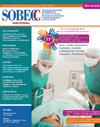Post Anesthesia Care of brazilian Hospitals: Organizational and Care Aspects
Keywords:
Anesthesia recovery period, Nursingcare, Postoperating period.Abstract
This study aimed to analyze the organizational and care structure of Post-Anestehetic Care Unit (PACU) in Brazilian hospitais and to comparethe actual situation with which advocates the nationalscientific literature on this subject. It is a field study,exploratory, descriptive, quantitative, conducted with 69 nurses participating in the 91 Brazilian Congress of Perioperative Room Nurses, Anesthetic Recoveryand Sterilized Material Center, sponsored by SOBECC, in July 2009. Aquestionnaire was developed containing sample characterization and the unity of PACU. The results showed that: in most institutions the PACU is part of the physical piant of the SurgicalCenter (SC); nurses, mostly, are female and has been operating for less than tive years in these institutions; and the Aidrete-Kroulik index is used as a dischargecriteria in nearly almost haif of these institutions. it is concluded that, despite legal requirements, a large number of PACU has not presented material and organizational resources essential to provide safecare to the patient during the post-anesthetic period.References
Possari JF. Assistência de enfermagem na recu-peração anestésica. São Paulo: látria; 2003.
Conselho Federal de Medicina. Resoluçãon° 1363/1993. Regulamenta a prática da anestesia.Diário Oficial da União, Poder Executivo, Brasília; 22mar. 1993; Seção1:3439.
Brasil. Ministério da Saúde. Portaria n° 400, de6 de dezembro de 1977. Dispõe sabre critérios deconstrução e acabamento de serviços de saúde.Diário Oficial da União, Brasília, 6 dez.1977.
Agência Nacional de Vigilância Sanitária. Resolu-ção RDC n° 50, de 21 de fevereiro de 2002. Dispõesobre o regulamento técnico para planejamento,programação e elaboração e avaliação de projetosfísicos de estabelecimentos assistenciais de saúde[Internet]. Brasília; 2002 [citada 2012jun. 121. Disponível em: http://bvsms.saude.gov.br/bvs/saudelegis/anvisaI2002Ires00502 1 022002. html
Galdeano [E, Rossi LA, Peniche ACG. Assistênciade enfermagem na recuperação anestésica. In: Car-valho R, Bianchi, ERF, organizadoras. Enfermagemem centro cirúrgico e recuperação. 2a reimp. Barueri:Manole; 2010. p.267-98.
Moraes LO, Peniche ACG. Assistência de enfermagem no período de recuperação anestésica: revisãode literatura. Rev Esc Enferm USP. 2003;37(4):34-42
Aiken LH, Clarke SP, Cheung RB, Sloane DM, Sil-ber JH. Educational leveis of hospital nurses and sur-gical patient mortality. JAMA. 2003;290(12)-1617-23.
Peniche ACG, Leite RCBO. Aspectos organizacio-nais da sala de recuperação pós-anestésica: plane-jamento físico, materiais e equipamentos, recursoshumanos. In: Carvalho R, Bianchi ERF, organizado-ras. Enfermagem em centro cirúrgico e recuperação.2a remp. Barueri: Manole; 2010. p.258-66.
Sociedade Brasileira de Enfermeiros de CentroCirúrgico, Recuperação Anestésica e Centro deMaterial e Esterilização. Práticas recomendadas -SOBECC. 5 a ed. São Paulo: SOBECC; 2009.
Costa ALS, Mendonza IYQ, PenicheACG. Hipo-termia no paciente em UTI. In: Padilha KAG, VattimoMFF, Silva SC, Kimura M. Enfermagem em UTI:cuidado do paciente crítico. Barueri: Manole; 2009.p.595-609.
Santos ST, Caregnato RCA. Hipotermia acidentalperioperatória: proposta de protocolo de assistênciade enfermagem. Rev SOBECC. 2010;15(2):45-51.
Brasil. Lei n°8.069, de 13 de julho de 1990. Dis-põe sobre o Estatuto da Criança e do Adolescentee dá outras providências [Internet]. Brasília; 1990 [citado 2012 jun. 12]. Disponível em: http:Ilwww.planalto.gov.br/ccivii/LEIS/L8069.htm
Brasil. Lei n° 10.741 de 1° de outubro de 2003.Dispõe sobre o Estatuto do Idoso e dá outras pro-vidências [Internet]. Brasília; 2003 [citado 2012 jun12]. Disponível em: http:!/www.planalto.gov.br!ccivil/LEIS!2003/L1 0.741 .htm
Conselho Federal de Enfermagem. Lei n° 7.498 de 25 de junho de 1986. Dispõe sobre a regula-mentação do exercício da enfermagem e dá outrasprovidências [Internet]. Brasília; 1986 [citado 2012jun 121. Disponível em: http://novo.portalcofen.gov.br/lei-n-749886-de-25-de-junho-de-1 986_41 61 html
Downloads
Published
How to Cite
Issue
Section
License
By publishing in Revista SOBECC, authors retain the copyright of their article and agree to license their work using a Creative Commons Attribution (CC BY 4.0) International Public License, thus accepting the terms of this license. The CC BY 4.0 license allows others to distribute, remix, adapt, and create from the published article, even for commercial purposes, provided they give due credit to the creators of the work (authors of the article).
The authors grant to Revista SOBECC the right of first publication, to identify itself as the original publisher, and grant to the journal a non-exclusive license to use the work in the following ways: (1) to sell and/or distribute the article in hard copies and/or in electronic format; (2) to distribute parts and/or the entire article in order to promote the journal through the internet and other digital and printed media; (3) to record and reproduce the article in any format, including digital media.
With this license, authors can enter into separate contracts for non-exclusive distribution of the article (e.g., publishing in an institutional repository or as a book chapter), with acknowledgement of authorship and initial publication in Revista SOBECC. Authors are encouraged to publish and distribute their work online after publication in the Revista SOBECC, as this can increase the article's visibility and impact.
In line with the journal's policies, each published article will be assigned a CC BY 4.0 license, which will be visible on the abstract page and in the PDF of each article with the respective link to the license terms.











